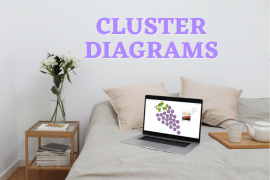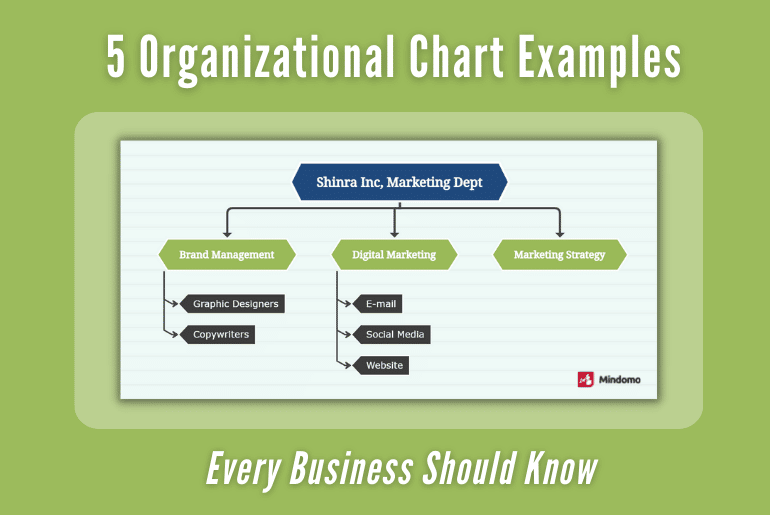
For large and small businesses alike, success depends on the organization. Part-time laborers, project managers, and high-level executives need to know where they fit. And there’s simply no better way to clarify those positions than with an organizational chart (or organigram).
By using one of the following organizational chart examples, your business can achieve its goals. It will be able to ensure that everyone understands their place and how they fit with others.
There are many different types of organizational charts, but all share the same basic purpose. They clarify the structure of an organization, reporting relationships, and responsibilities. However, they can come in a wide variety of forms, including…
- Hierarchical org charts which offer a top-down picture of your company with a strong emphasis on chain-of-command.
- Matrix organizational structure charts which show how employees are related to each other by function.
- Product based divisional charts which show the relationship between employees and the products they’re involved in.
- Flat charts, which disregard rank altogether and offer a more democratic picture.
- And more…
In this article, we’ll look at some of these types of organizational charts, noting the pros and cons of each. Plus, we’ll discuss how you can begin creating organizational charts using a mind map website or diagram software. The included organization chart templates will make developing your own easier than ever.
1. Hierarchical Org Charts
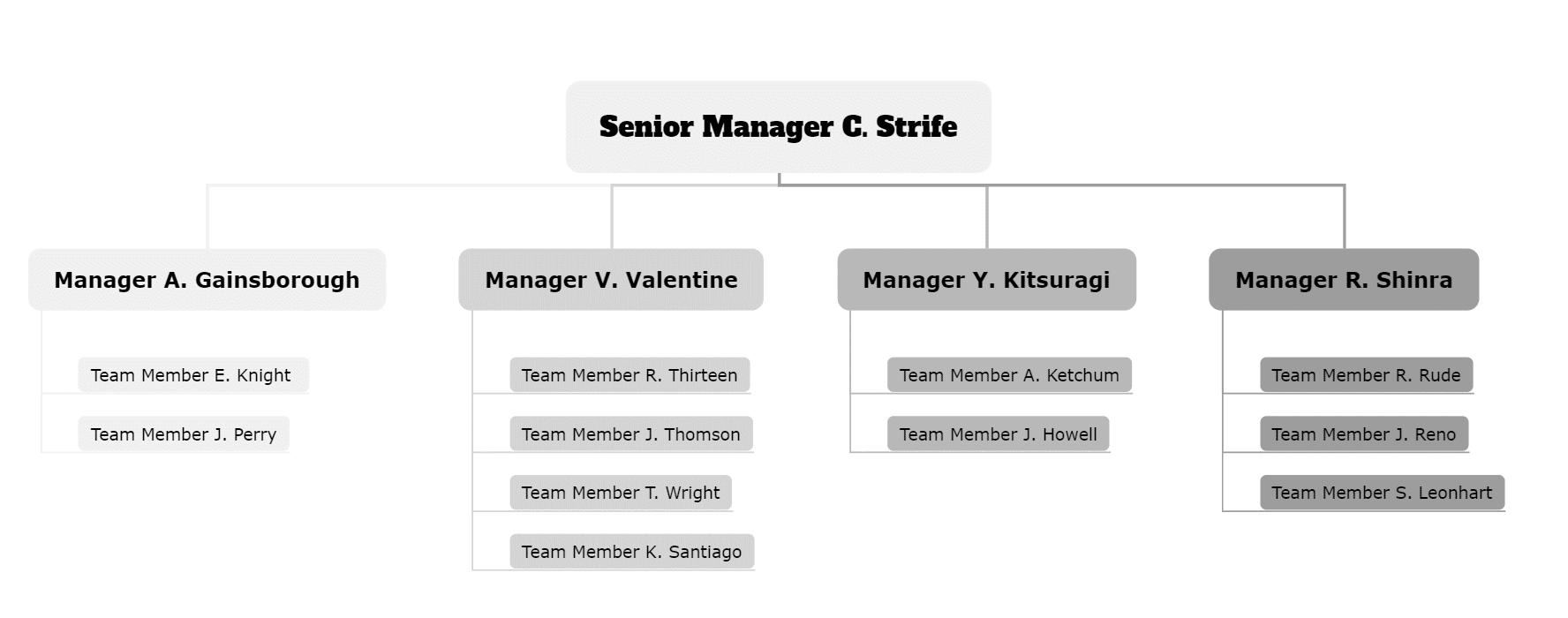
There’s something about hierarchical org charts that just screams “corporate.” Perhaps it’s the rigid lines and boxes. Or it could be the fact that they always seem to favor the people at the top. Whatever the reason, hierarchical org charts seem like the epitome of corporate bureaucracy.
But just because they’re loved by project managers and senior executives doesn’t mean they’re not useful. In fact, hierarchical organizations and their organigrams can be a helpful tool for visualizing responsibilities and relationships.
However, it’s important to keep in mind that hierarchical org charts don’t always accurately reflect an organization’s actual structure. The real nuances of leadership and influence can’t be fully captured by a diagram strictly reporting relationships in theory. In many cases, they’re more of a simplified ideal than a true representation of reality.
When creating a hierarchical org chart, you’ll have plenty of organizational chart templates to choose from. After all, it is an incredibly popular type of organizational structure.
Advantages of hierarchical organizational charts
- Improved clarity regarding jurisdiction and accountability standards
- More clearly defined roles and responsibilities for each employee
- Increased motivation for workers since career paths are clear
- The ability to offer specialized skillsets to each employee A stronger sense of community between workers in the same unit
Disadvantages of hierarchical organizational charts
- Heavier emphasis on bureaucracy could prolong projects
- When departments are siloed, it can lead employees to only care about their department’s success rather than the company’s overall success
- May inhibit low-level employees from feeling like they have a voice within the company
2. Functional Org Structure Charts
While there are similarities between hierarchical org charts and functional org charts, there are also major differences. For instance, hierarchical org charts tend to place a much heavier emphasis on top-down chains of command. Meanwhile, functional org charts offer a greater focus on the different departments within a company and how they are interconnected. This is why they’re such a popular type of organizational structure.
But functional org charts aren’t limited to whole company overviews. This type of chart can also be used to show the different functions of a single department.
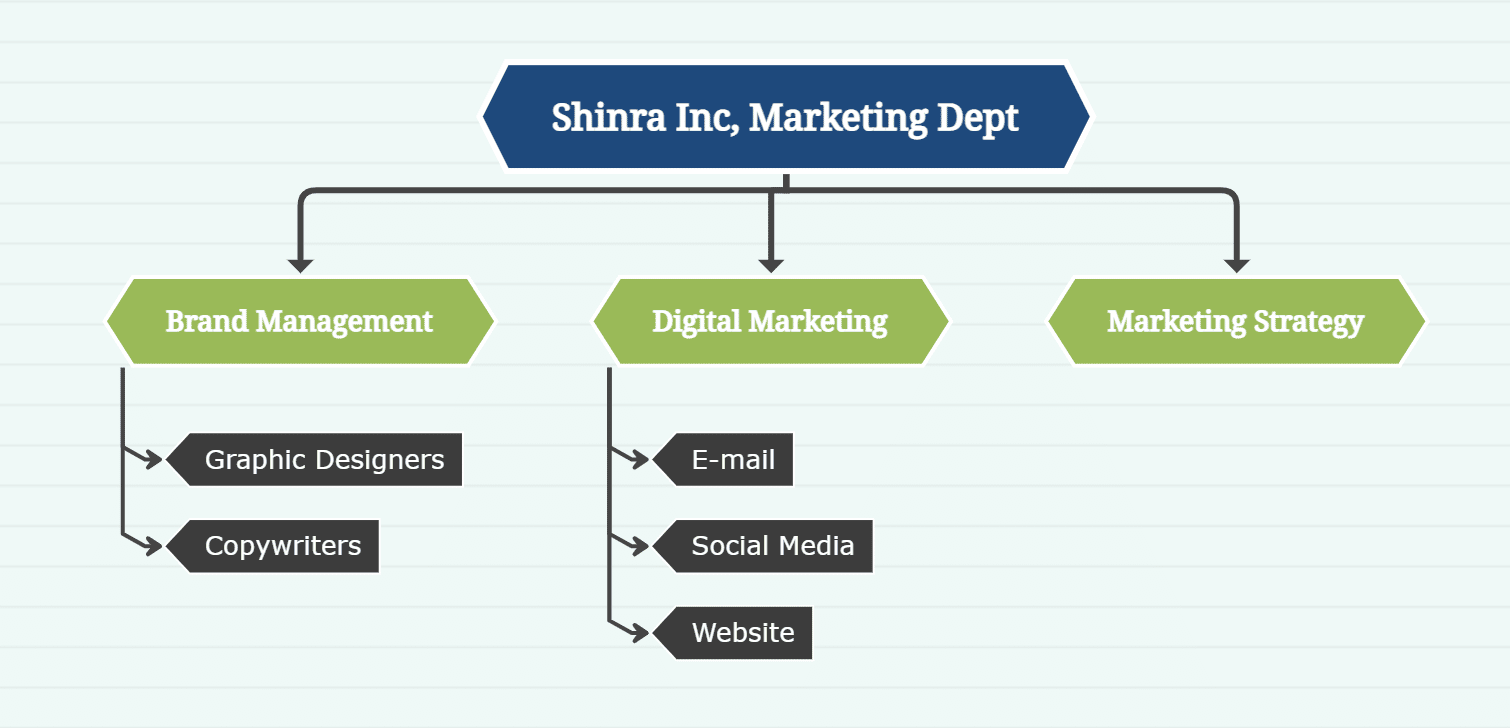
A marketing team might have a functional org chart that clarifies the roles within the department. This would allow project managers, brand managers, and the sales team all to understand where they fit.
The functional structure is beneficial because it allows employees to specialize in their field. It also makes it easy to add divisions as the company grows.
Advantages of Functional Org Structure Charts
- Helps employees focus on their work
- Can be easily scaled to fit the needs of any business
Disadvantages of Functional Org Structure Charts
- Can lead to disjointed divisions, limiting cross-division collaboration
- Can muddy the water when it comes to procedures that transcend divisions
3. Product Based Divisional Structure Charts
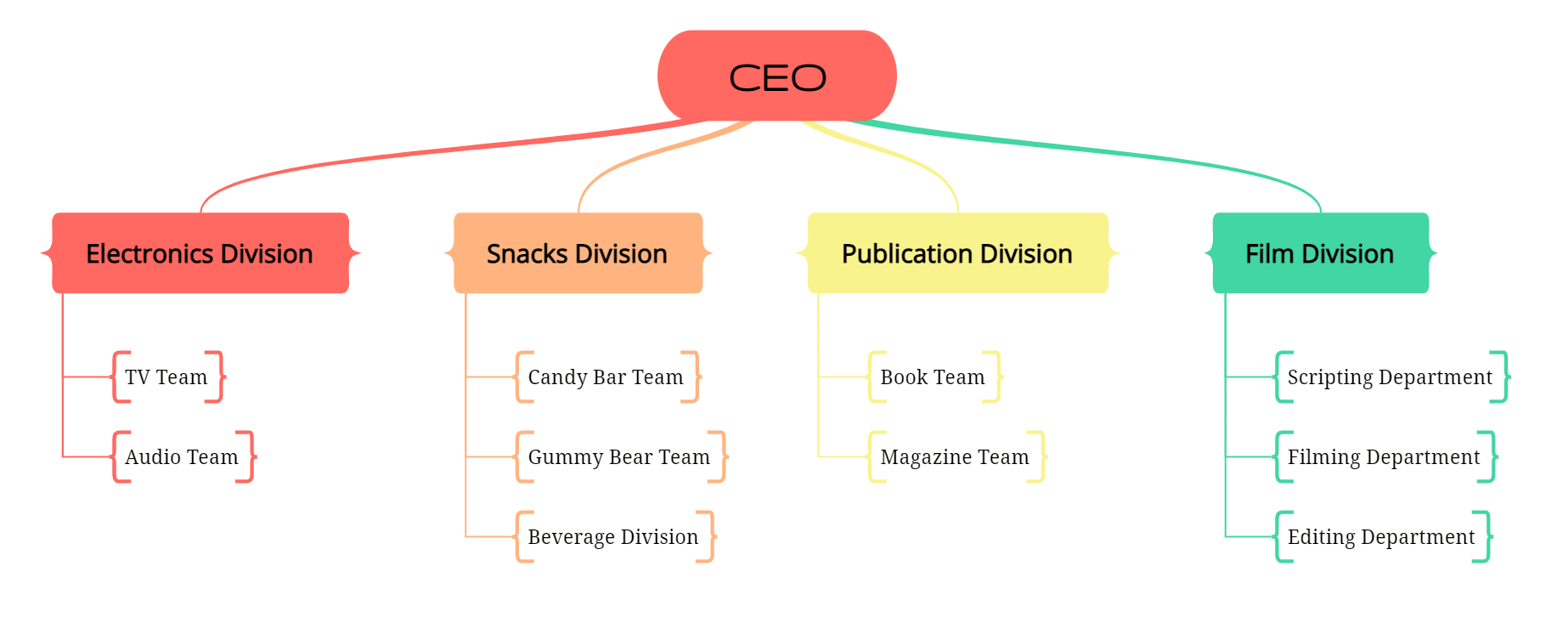
A product based divisional structure divides the company into divisions based on the products or services they offer. This can be an effective way to manage a company because it helps to clearly define each team’s responsibilities. It also ensures that everyone within a product division is focused on a singular goal.
However, it can also lead to silos and turf wars, as each division tries to protect its own interests. In addition, it can be difficult to make changes when products become outdated or new ones are needed. This can make scalability difficult.
Advantages of Product Based Divisional Structure Charts
- Allows a single product or service to provide focus and structure to staff
- Creates camaraderie and encourages healthy competition
Disadvantages of Product Based Divisional Structure Charts
- Teams working on established products can become lethargic
- Can foster unhealthy division between product teams
4. Market Based Divisional Structure Charts
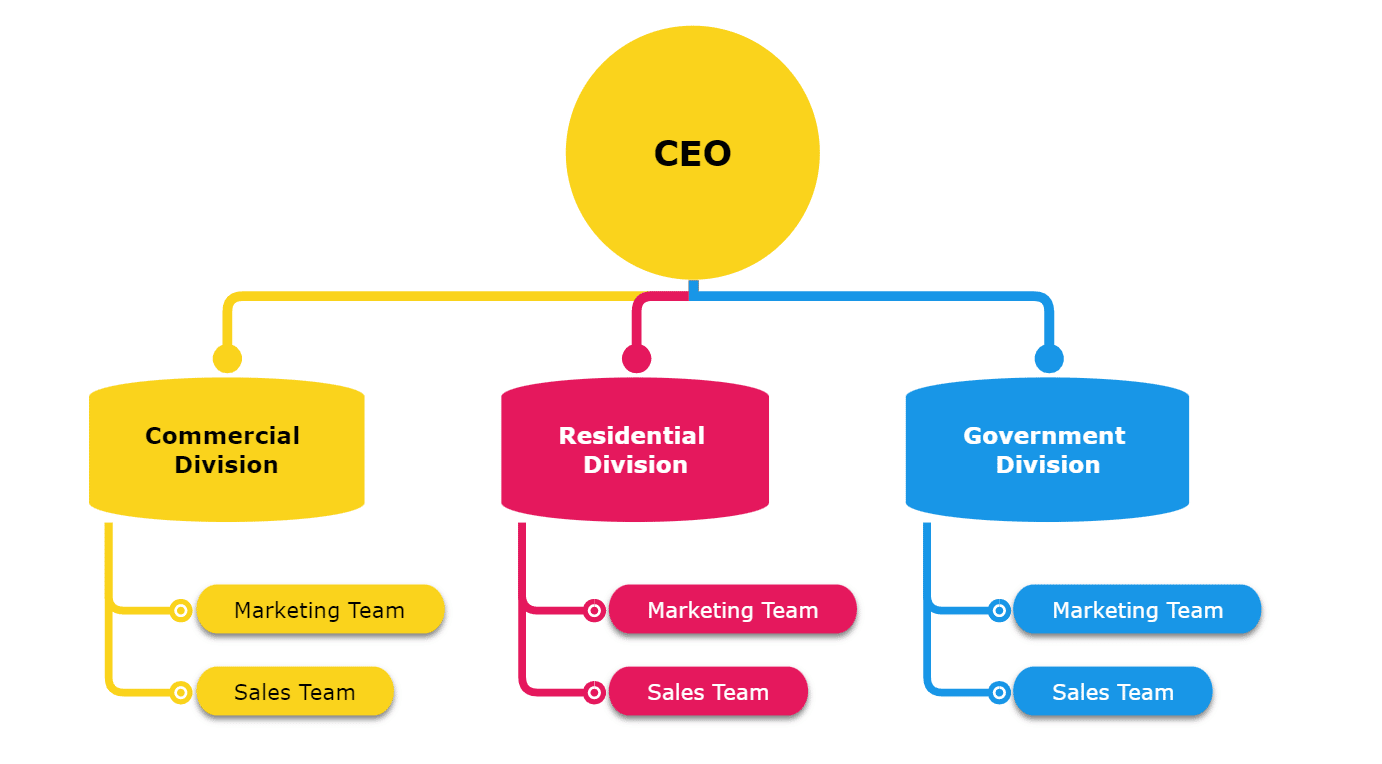
The market-based divisional structure is an organizational strategy that creates divisions based on market. This could be a particular customer type, a specific industry, or some other niche.
This structure can be beneficial for companies because it allows them to better focus their resources on specific markets. It’s especially helpful if the company has different niches it’s targeting. The value is only multiplied as knowledge of the targeted market segments grows. Market based divisional structures are also great because they keep the customer at the center of everything.
Unfortunately, if divisions are siloed off too much, they can develop incompatible systems. Or they can duplicate work, wasting time and resources. This is why it’s important to keep divisions apprised of the others even if they aren’t working closely together.
Advantages of Market Based Divisional Structure Charts
- Keeps the focus on the customer
- Easily scales
- Becomes more effective as knowledge of target markets increase
Disadvantages of Market Based Divisional Structure Charts
- Divisions can become too divided, wasting resources
- Less effective if the business has a more generic target market
5. Team Based Organizational Charts
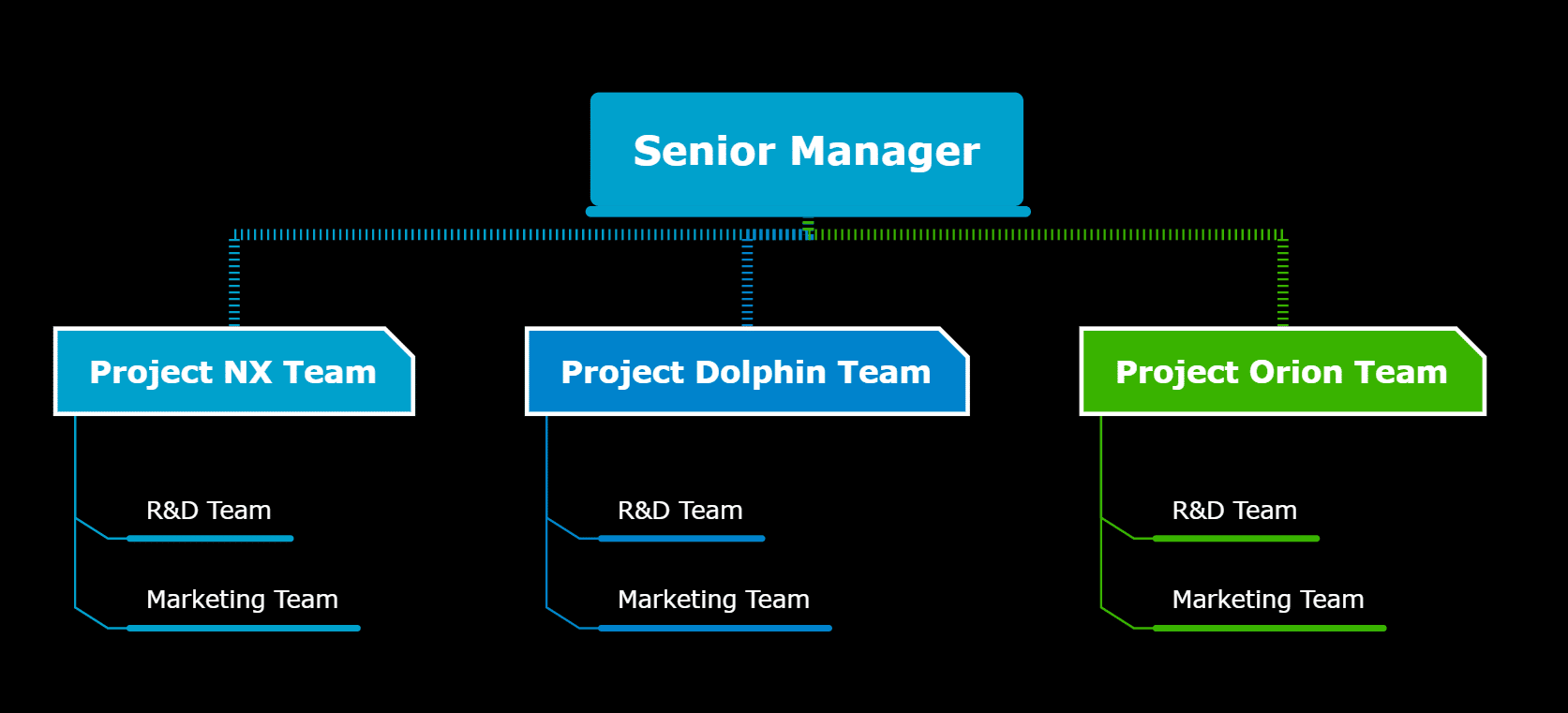
As its name implies, a team based organizational structure groups things by the teams within a company. This can be helpful because it allows teams to work on specific problems without getting bogged down in bureaucracy. It also gives employees autonomy and encourages collaboration among project managers and team members.
However, this type of divisional organizational chart can be difficult to maintain if the company is large or multi-layered. In addition, it can lead to siloing, as teams become too focused on their own projects. This makes it difficult for people from different departments to collaborate effectively.
Advantages of Team Based Organizational Charts
- Increases employee autonomy and collaboration
- Encourages a more fluid workflow
Disadvantages of Team Based Organizational Charts
- Can create silos that limit knowledge sharing between departments
- Can make larger organizations difficult to manage and keep track of
Create an Org Chart for Your Business
Creating an organizational chart for your business doesn’t have to be difficult. With the right diagram software and an organization chart template, it’s a snap.
There aren’t many apps out there dedicated to solely creating an organizational chart. But there are plenty of mind map software to choose from.
So, what’s a mind map? It’s a term used for visuals that organize information. They can come in all kinds of varieties, including mind maps for business, story plotting mind maps, and more. And you can easily use mind mapping software to create clear, robust business mind maps, including org charts (read more about how to create a business mind map on our blog article).
Any decent mind map website is going to offer plenty of organizational chart templates to choose from. Begin by thinking about the type of organizational structure your business has. Is it hierarchical or flat? Is it organized by product? Market? Something else?
Once you’ve identified your structure, choose the organizational chart template accordingly. Then, begin filling in the organizational chart template with your business’s information. With software like Mindomo, you can even add images, links, and even files to your organization chart template.
So, why not get started editing your own organization chart template right now? It’s the perfect way to give yourself and staff a better understanding of how things get done in your business. And understanding your business is the first step in pushing it toward greater success.
Keep it smart, simple, and creative!
The Mindomo Team





